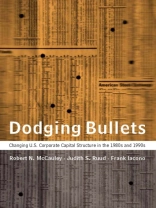An entertaining summary of the broad reshaping of U.S. corporate finance in the last decade and a half.The late 1980s saw a huge wave of corporate leveraging. The U.S. financial landscape was dominated by a series of high-stakes leveraged buyouts as firms replaced their equity with new fixed debt obligations. Cash-financed acquisitions and defensive share repurchases also decapitalized corporations. This trend culminated in the sensational debt-financed bidding for RJR-Nabisco, the largest leveraged buyout of all time, before dramatically reversing itself in the early 1990s with a rapid return to equity.This entertaining summary of the broad reshaping of U.S. corporate finance in the last decade and a half looks at three major issues: why corporations leveraged up in the first place, why and how the leverage wave came to an end, and what policy lessons are to be drawn.Using the Minsky-Kindleberger model as a framework, the authors interpret the rise and fall of leveraging as a financial market mania. In the course of chronicling the return to equity in the 1990s, they address a number of important corporate finance questions: How important was the return to equity in relieving corporations’ debt burdens? How did the return to equity affect the ability of young high-tech firms to finance themselves without selling out to foreign firms?
Frank Iacono & Robert N. McCauley
Dodging Bullets [PDF ebook]
Changing U.S. Corporate Capital Structure in the 1980s and 1990s
Dodging Bullets [PDF ebook]
Changing U.S. Corporate Capital Structure in the 1980s and 1990s
Mua cuốn sách điện tử này và nhận thêm 1 cuốn MIỄN PHÍ!
Ngôn ngữ Anh ● định dạng PDF ● Trang 427 ● ISBN 9780262279383 ● Nhà xuất bản The MIT Press ● Được phát hành 1999 ● Có thể tải xuống 3 lần ● Tiền tệ EUR ● TÔI 4852063 ● Sao chép bảo vệ Adobe DRM
Yêu cầu trình đọc ebook có khả năng DRM












